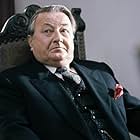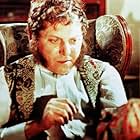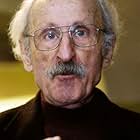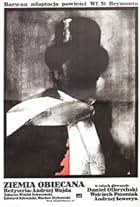IMDb RATING
7.8/10
6K
YOUR RATING
Upon finding a book that relates his grandfather's story, an officer ventures through Spain meeting a wide array of characters, most of whom have a story of their own to tell.Upon finding a book that relates his grandfather's story, an officer ventures through Spain meeting a wide array of characters, most of whom have a story of their own to tell.Upon finding a book that relates his grandfather's story, an officer ventures through Spain meeting a wide array of characters, most of whom have a story of their own to tell.
- Awards
- 1 win
- Director
- Writers
- All cast & crew
- Production, box office & more at IMDbPro
Storyline
Did you know
- TriviaLuis Buñuel, who seldom viewed movies more than once, liked this film so much that he saw it three times.
- Quotes
Donna Rebecca Uzeda: All these adventures begin simply. The listener thinks it'll soon be over, but one story creates another, and then another.
Don Pedro Velasquez: Something like quotients which can be divided infinitely.
- Alternate versionsOriginally released in a cut version in the US, the film was restored to it's original 182-minutes running time and premiered at the New York Film Festival in September 1997. The restoration project, supervised by Edith Kramer, was initially sponsored by Grateful Dead's leader Jerry Garcia and later completed by Francis Ford Coppola and Martin Scorsese. The restored version includes a dedication to Jerry Garcia.
- ConnectionsFeatured in Aktorka (2015)
Featured review
"The Saragossa Manuscript" is a very entertaining film that two or three viewings will eventually allow you to understand fully. Its style mixes an easy congeniality and libertine spirit à la "Tom Jones" (1963) with elements of sophisticated comedy and slapstick commedia dell'arte, all delivered by an expert cast and imbued with a tangible sense of fun and mystery.
Its story centers around the efforts by a brave officer in mid-XVIIIth Century Spain to distance himself from ghosts or evil spirits that visit him every night and take the form of two charming Muslim sisters who want to be his lovers and bear his children, even in succubi form, and insist that he convert to Islam. Those erotic (and heretic) reveries also have something to do with devilry and all things forbidden and his encounters with those women are encouraged by the mysterious figure of the Cabalist (another forbidden science) and his sister Rebecca and severely repressed by roaming members of the Catholic Inquisition. This framing story is the pretext for a series of very involving and amusing moral tales told in flashback by several participants, who all echo each other and whose moral seems to be that all religious and social prohibitions and ghost stories should be taken with a grain of salt. In this ocean of mystery and gothicism stands the figure of Don Pedro Velasquez, a mathematician who befriends the hero and who seems the only character to believe in the cold light of reason (foreshadowings of Polanski's "The Fearless Vampire Killers").
After several viewings, the only point in the film which remains mysterious is why Frasqueta's lover (Pena Flor) should appear with a bloodied face when he climbs in her bedroom through a window, a fact the viewer has to provide his own backstory for and which could be evidence that the original film was even longer than the 182 minutes at which it clocks in on the restored DVD edition. (Personal theory: Pena Flor really was Frasqueta's lover and the band of thugs Frasqueta hired to deceive her husband into believing he had paid to have his wife's lover killed really did attempt to kill him before he paid them to kill her husband instead.) Well, that and the fact that Jerry Garcia of the Grateful Dead, an early fan of the film and one the persons responsible for its restoration, was fond of quoting a scene from the film that doesn't seem to exist anymore (a character's confrontation with Death at the foot of his bed, which, according to DVD Savant, could come from the 1960 Mexican film "Macario")...
A WORD ABOUT THE DVD: This film was restored thanks to the efforts and money of Martin Scorsese, Francis Ford Coppola and the above-mentioned Jerry Garcia, and the collaboration of the director. It was shot in Dyaliscope, the French CinemaScope equivalent, which is always projected at a standard 2.35:1 ratio. This "enhanced for widescreen TVs" DVD shows an image with a ratio of 2:1, which means that the picture information is still squeezed by a ratio of 15 % in relation to the way it should be shown normally. In this presentation, the picture is "fish-eyed" and the characters and animals appear too slim. There is no way around this problem if you watch it on a 4:3 television set. However, if you own a widescreen TV, you can set-up your DVD player as for a standard 4:3 TV monitor and gently unsqueeze the resulting picture with any one of the "cheater" modes provided by your TV model to approximate a 2:35 presentation. There is no way of knowing if this drawback is the result of simple ignorance (mistaking the 2:1 squeeze of Dyaliscope with a 2:1 projection ratio) or of a compromise allowing to use the greater part of the TV screen in both 4:3 and 1.77:1 TV sets. It took me along time to figure out this problem and I am glad to share this little trick with you.
Its story centers around the efforts by a brave officer in mid-XVIIIth Century Spain to distance himself from ghosts or evil spirits that visit him every night and take the form of two charming Muslim sisters who want to be his lovers and bear his children, even in succubi form, and insist that he convert to Islam. Those erotic (and heretic) reveries also have something to do with devilry and all things forbidden and his encounters with those women are encouraged by the mysterious figure of the Cabalist (another forbidden science) and his sister Rebecca and severely repressed by roaming members of the Catholic Inquisition. This framing story is the pretext for a series of very involving and amusing moral tales told in flashback by several participants, who all echo each other and whose moral seems to be that all religious and social prohibitions and ghost stories should be taken with a grain of salt. In this ocean of mystery and gothicism stands the figure of Don Pedro Velasquez, a mathematician who befriends the hero and who seems the only character to believe in the cold light of reason (foreshadowings of Polanski's "The Fearless Vampire Killers").
After several viewings, the only point in the film which remains mysterious is why Frasqueta's lover (Pena Flor) should appear with a bloodied face when he climbs in her bedroom through a window, a fact the viewer has to provide his own backstory for and which could be evidence that the original film was even longer than the 182 minutes at which it clocks in on the restored DVD edition. (Personal theory: Pena Flor really was Frasqueta's lover and the band of thugs Frasqueta hired to deceive her husband into believing he had paid to have his wife's lover killed really did attempt to kill him before he paid them to kill her husband instead.) Well, that and the fact that Jerry Garcia of the Grateful Dead, an early fan of the film and one the persons responsible for its restoration, was fond of quoting a scene from the film that doesn't seem to exist anymore (a character's confrontation with Death at the foot of his bed, which, according to DVD Savant, could come from the 1960 Mexican film "Macario")...
A WORD ABOUT THE DVD: This film was restored thanks to the efforts and money of Martin Scorsese, Francis Ford Coppola and the above-mentioned Jerry Garcia, and the collaboration of the director. It was shot in Dyaliscope, the French CinemaScope equivalent, which is always projected at a standard 2.35:1 ratio. This "enhanced for widescreen TVs" DVD shows an image with a ratio of 2:1, which means that the picture information is still squeezed by a ratio of 15 % in relation to the way it should be shown normally. In this presentation, the picture is "fish-eyed" and the characters and animals appear too slim. There is no way around this problem if you watch it on a 4:3 television set. However, if you own a widescreen TV, you can set-up your DVD player as for a standard 4:3 TV monitor and gently unsqueeze the resulting picture with any one of the "cheater" modes provided by your TV model to approximate a 2:35 presentation. There is no way of knowing if this drawback is the result of simple ignorance (mistaking the 2:1 squeeze of Dyaliscope with a 2:1 projection ratio) or of a compromise allowing to use the greater part of the TV screen in both 4:3 and 1.77:1 TV sets. It took me along time to figure out this problem and I am glad to share this little trick with you.
- How long is The Saragossa Manuscript?Powered by Alexa
Details
- Release date
- Country of origin
- Official site
- Language
- Also known as
- Die Handschrift von Saragossa
- Filming locations
- Olsztyn, Slaskie, Poland(castle)
- Production company
- See more company credits at IMDbPro
Box office
- Gross worldwide
- $13,377
- Runtime3 hours 2 minutes
- Color
- Sound mix
- Aspect ratio
- 2.35 : 1
Contribute to this page
Suggest an edit or add missing content

Top Gap
By what name was The Saragossa Manuscript (1965) officially released in India in English?
Answer



































